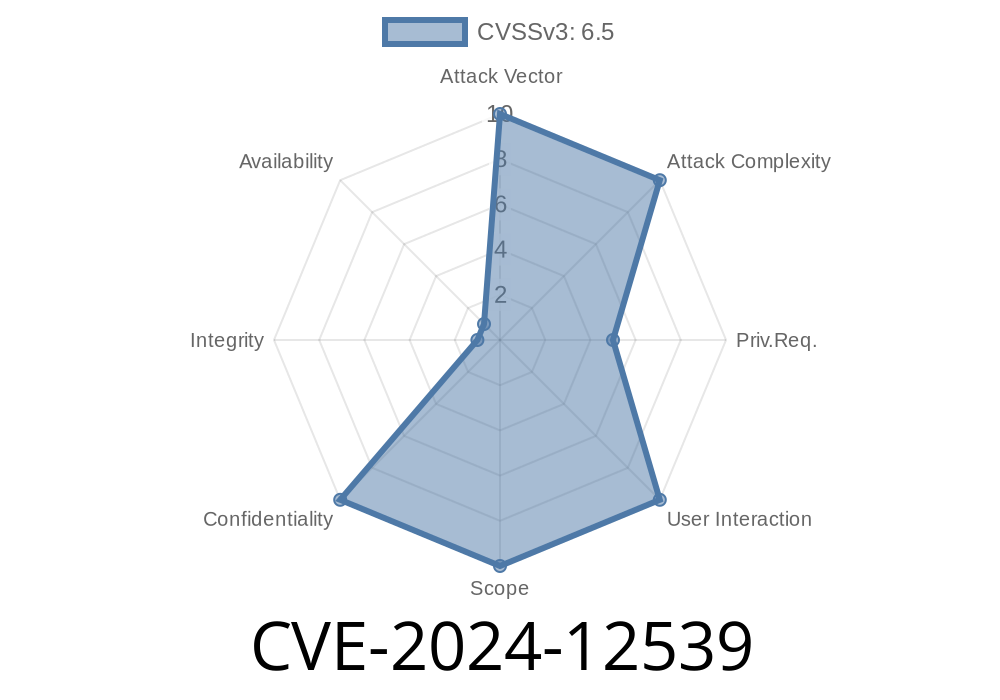Elasticsearch is one of the most popular search engines and databases for storing and searching large amounts of data. Security is super important for protecting sensitive documents. In early 2024, a critical vulnerability (CVE-2024-12539) was found that affects Document Level Security (DLS) in Elasticsearch. If your system relies on DLS to restrict data per user or group, you need to read this post carefully!
What is CVE-2024-12539?
CVE-2024-12539 is an authorization flaw in certain Elasticsearch query types—a weakness that can let an attacker bypass DLS checks and access documents they shouldn’t be able to see, just by crafting special queries.
In plain terms: Imagine you have sensitive contracts in your Elasticsearch index and only "legal" role users are allowed to read them, but a hacker with a "marketing" role manages to query and view the legal contracts anyway.
How Does DLS Normally Work?
Document Level Security (DLS) uses roles and queries to return only data the user is allowed to see. For example, if a user’s role allows only documents tagged "department": "sales", then DLS filters other documents out at search time.
What Went Wrong?
The bug lies in how certain queries are processed and authorized. If an attacker submits a slightly modified search query, Elasticsearch neglects to check their permissions for those particular requests. The result: unauthorized data leaks.
Exploit Scenario
Suppose your organization gives users access to documents based on their teams using DLS rules.
Example DLS Role
{
"indices": [
{
"names": [ "company_docs" ],
"privileges": [ "read" ],
"query": {
"term": { "department": "marketing" }
}
}
]
}
*Users with this role should ONLY see docs where "department": "marketing".*
A malicious user figures out that certain search APIs, like these
- _search/template
Exploit Code Snippet (Python example with requests)
import requests
from requests.auth import HTTPBasicAuth
url = "http://elasticsearch.example.com:920/company_docs/_search/template";
query = {
"id": "my_template",
"params": {
# By manipulating parameters, bypass DLS and fetch any docs!
}
}
auth = HTTPBasicAuth("malicious_user", "password")
response = requests.post(url, json=query, auth=auth)
print(response.json())
In the real exploit, the attacker might define or abuse a template that doesn't reference the DLS field (e.g., department), so DLS is not enforced.
Proof of Concept Breakdown
1. Create or abuse a search template (_search/template) that fetches *all* docs, not just those allowed by your DLS query.
References
- Official Elasticsearch Security Advisory
- NVD Entry for CVE-2024-12539
- Elastic blog post on the issue
What Should You Do?
1. Patch ASAP:
If you use DLS, especially with search templates or custom queries, upgrade Elasticsearch to the latest patched version.
2. Audit Access:
Check logs for suspicious template search queries and review indices’ access controls.
3. Review Search Templates:
Audit all templates and scripted queries to make sure they don’t let users bypass DLS.
4. Use Principle of Least Privilege:
Always give users only as much access as they absolutely need.
Final Words
CVE-2024-12539 is a serious reminder: Advanced features like DLS are powerful, but when implementation bugs occur, they put all your sensitive data at risk—even if your permissions look perfect on paper.
Don’t let your Elasticsearch leak secrets: patch now and audit your templates!
### Got questions or experiences with CVE-2024-12539? Comment below or check the official Elastic forum thread.
Stay secure, stay alert!
> This guide is exclusive and crafted for clarity. Refer to the links above for official updates and technical deep-dives.
Timeline
Published on: 12/17/2024 21:15:07 UTC
Last modified on: 02/04/2025 15:16:44 UTC
